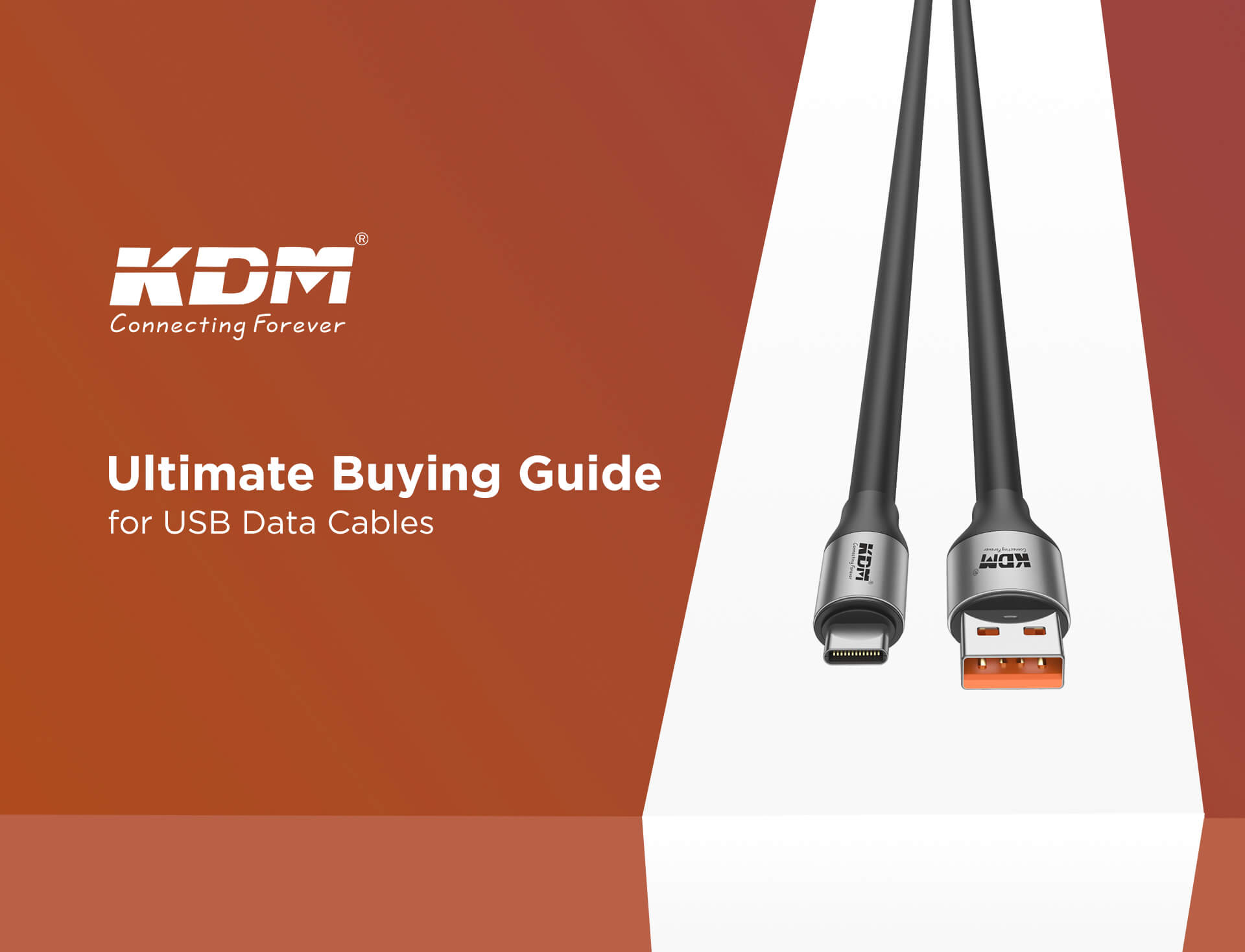USB data cables have become an integral part of our life and can be seen in random places in our homes, from cupboards and drawers to carelessly lying on the side table. Most people are unaware of the weight these USB cables and connectors carry. In this blog, we will discuss a detailed guide on purchasing USB Data Cables, so stay connected till the end.
Ultimate Buying Guide for USB Data Cables
In the below section, we have mentioned the detailed guide on USB data cables:
1. USB:
Universal Serial Bus or USB cable is a universally accepted system that connects all devices to the computer through a USB connector. It is compatible with varied devices & accessories.
2. USB Connector:
We all have seen a physical connecting point that starts through a USB cable & goes to the USB port. It is what we call the USB connector. It avoids the probability of connecting the wrong cables to the USB ports. With the help of a USB connector, USB can be connected in a correct & stable way allowing a particular type of USB cable to connect with only a compatible USB port.
3. USB Types:
The word USB Type is used for the physical nature of a USB port & a connector. You can easily recognize the USB Type by looking at the connectors attached to the USB cable ending point.
4. USB Type A:
The compatibility of the USB Type A starts from USB 1.0 & above. It generally has the oldest design structure & rectangular shape. You will typically find it on various devices such as flash drives, computers, laptops, mobiles, etc.
5. USB Type B:
The USB Type B connectors are square-shaped & have a broad aperture. They usually power up devices & can be easily seen on giant-sized electronics such as scanners & printers.
6. USB Type C:
The USB Type C cables are flatter connectors & have newly entered the market. They are compatible with a range starting from USB 1.1 to USB 3.2. People mostly prefer such cables because of their fast data transfer speed of up to 10 Gbps.
7. Mini USB:
It is a miniature USB connector best for devices that have small ports. The Mini USB is generally seen on camcorders & digital cameras.
8. Micro USB:
The Micro USB is the most miniature version to date that’s even tinier than the Mini USB type. It is best compatible with USB 2.0 & USB 3.0. Apart from this, you can find it on GPS SatNav systems, digital cameras, smartphones, or Amazon Kindle.
9. USB Versions:
There are different versions of data cable available in the market, starting from USB 1.0, USB 2.0, and USB 3.0 to USB 3.1.
10. Fast Data Transfer:
The USB 3.0 & USB 3.1 are ideal for transferring large volumes of data at 5 Gbps & 10 Gbps. Use USB 2.0 for a small volume of data transfer at 480 Mbps.
11. Power Supply & Charging:
If you are looking for a USB Cable that supports charging & power supply, look at none other than USB 2.0, 3.0 &
12. Video:
Use USB 3.0 & USB 3.1 USB cables as they work the best way to support the video data. Other versions, like USB 1.1 & USB 2.0, are incompatible.
We hope that the above guide helped you in getting awareness about data cables. Once you understand its various types, versions & core importance, you can make the right decision while purchasing it. Being the leading supplier of electronic products, we provide the Best USB Cables in India. Some of our best-selling products are KSC8, K4 3IN1, KC-20, and U18. Browse the USB Data Cables section on our official website to understand our offerings.


